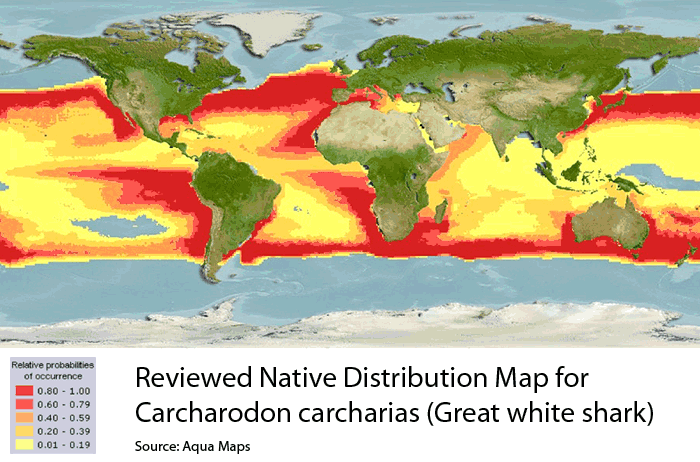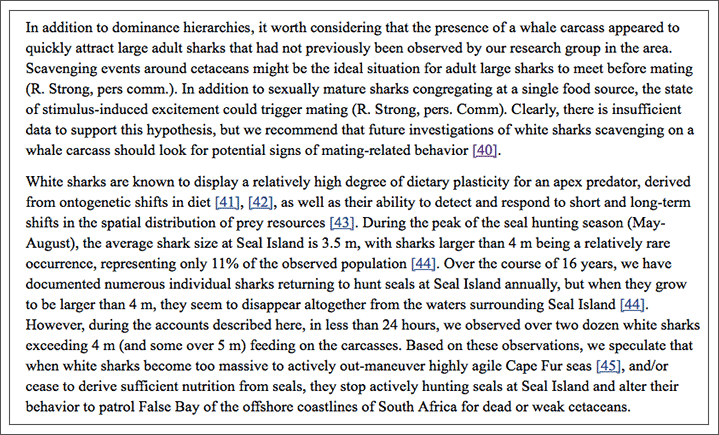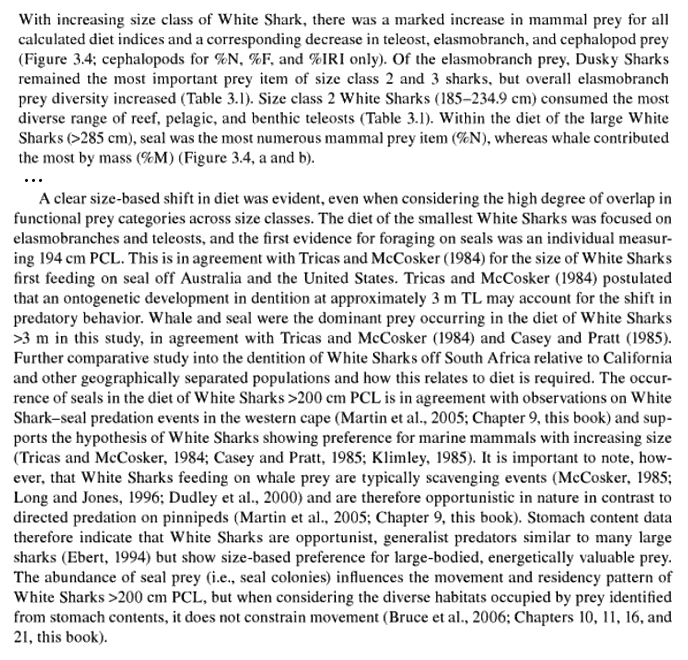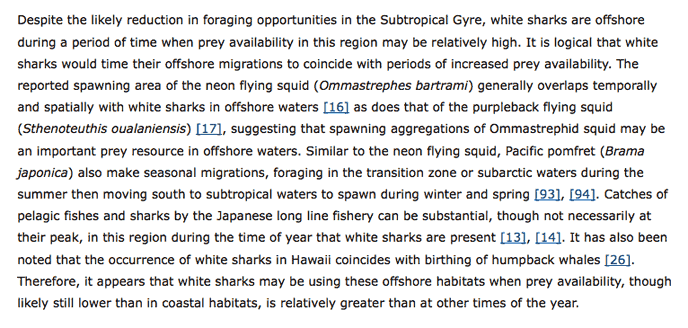Shark attacks and whale migration in Western Australia
Shark numbers
The main predators/scavengers of whales in the Indian and Southern oceans are killer whales and great white sharks.
Great whites have been a protected species in WA waters since 1999. Whenever possible they feast on weak, injured and dead whales, with a taste for vulnerable humpback calves that are born during the northern migration from Antarctica and escorted by their mothers to and from the Kimberley where they are nurtured during winter and spring.
During their journeys south to the Antarctic from WA's northern waters, usually beginning around August, humpbacks swim closer to the shore and hug the bays because it better protects their young.
This is evident through the increasing number of Western Australia pod strandings (desktop site) that mostly occur during the southern leg of the migratory season, with reports since 2009 of more humpbacks coming ashore in poor condition along the WA coastline and fears their population is exceeding the available food.
More sharks are drawn close to WA shores where the whale prey has become plentiful, and it has been decades since so many were swimming off the beaches of Western Australia.
WA's humpback population around 1900 was estimated at a little over 30,000. In 1935 it was less than 17,000 and by 1949 it was below 10,000.
Records indicate there were five fatal shark attacks in WA from 1896 to 1925. Modern hunting techniques were wiping out humpback populations in following years and there were just three fatal shark attacks from 1925 to 1995.
By the 1960s there were less than 600 adult humpbacks off the WA coast. Since their slaughter was banned in 1963, numbers have rebounded by about 10% per year with some studies suggesting population growth close to 12%. Since 1995 there have been 19 fatal attacks on swimmers, divers and surfers, with one blamed on tiger sharks, two unknown species and the rest great whites.
The whales disappeared and the sharks disappeared. The whales returned, the sharks returned, and this time they've found a lot more humans swimming nearby.
Shark biology
Fairly uncommon compared to other shark species even before human exploitation, global numbers of great whites have crashed by 60% to 95% in different oceans around the world since the 1800s. Albeit a dubiously low figure, a 2010 survey (desktop site) suggested there were just 3,500 left on the planet.
Great whites are not a strictly coastal species and are know to swim between South Africa and Australia through cold lower latitudes, their habitat including several thousand kilometres north along the WA coast. This is the humpback whales' migratory path.

The female great white is believed to reach sexual maturity at between 12 and 17 years, possibly older. It is unlikely that this species, which was protected since 1999 because of its threatened status, has somehow exploded in number within a single generation.
No matter how many great white sharks are in the Indian Ocean, it is logical that they will be lured toward their favourite food so they can scavenge or kill a dying adult humpback, a vulnerable, sick or aborted calf, or a carcass that permeates oil for kilometres around.
The video below of 27 great white sharks eating a 10 metre whale carcass provides a further clue why this species would be attracted to the tens of thousands of humpbacks swimming up and down WA's coast each year, the 13,000 kilometre journey taking its toll on the southern leg with newborn needing protection and hundreds dying.
Click or tap the Play arrow above
This evidence suggests there may be a reproductive stimulus among great white sharks feasting on a whale carcass, the huge meal causing a hormone release due to signals there is abundant food and the environment is conducive to breeding. If accurate, species survival means it's inevitable that great whites are attracted to whale migration routes.

Estimates of great white longevity vary from 23 to well over 50 years and these sharks can survive for about two weeks (desktop site) from a single large meal (aka a whale).
Great white sharks usually give birth to between five and 10 pups, each about 1.5 metres long, and the females are assumed to reproduce roughly every three years. There is no maternal care from birth and pup survival is believed to be low.
Not all newborn will survive because of disease and natural predation, although man's activities may have reduced the toll from other predators (i.e. reduced numbers of other shark species and slowly recovering killer whales).
Research such as the extract below from the book Global Perspectives on the Biology and Life History of the White Shark (desktop site) shows that in large sharks, the greatest mass of their diet is whale meat:

Similar clues can be found in Using Stable Isotope Analysis to Understand the Migration and Trophic Ecology of Northeastern Pacific White Sharks (desktop site).

The research suggests that as great whites become larger they increasingly target marine mammal prey and, with most of their diet comprising whale, it is probable their habitat is influenced by the location and availability of these animals.
Swimming with Humpback Whales : Potential risks from sharks (PDF download), research submitted to the Queensland government in August 2014, confirms the white shark correlation with whale migration and calls for further inquiry, despite being ignored by the media.
It is likely that great white numbers in Australian waters have increased since protected species status was enforced in 1999, bearing in mind these sharks traverse the Southern and Indian oceans, but this recovery is from an historically low base.
It is probable that oceanic shark numbers are less important than the great white's preferred feeding habitat, which has become more attractive along the WA coastline since whale numbers exploded and may help explain both the increase in shark numbers and the more likely attack months.
Back To Top